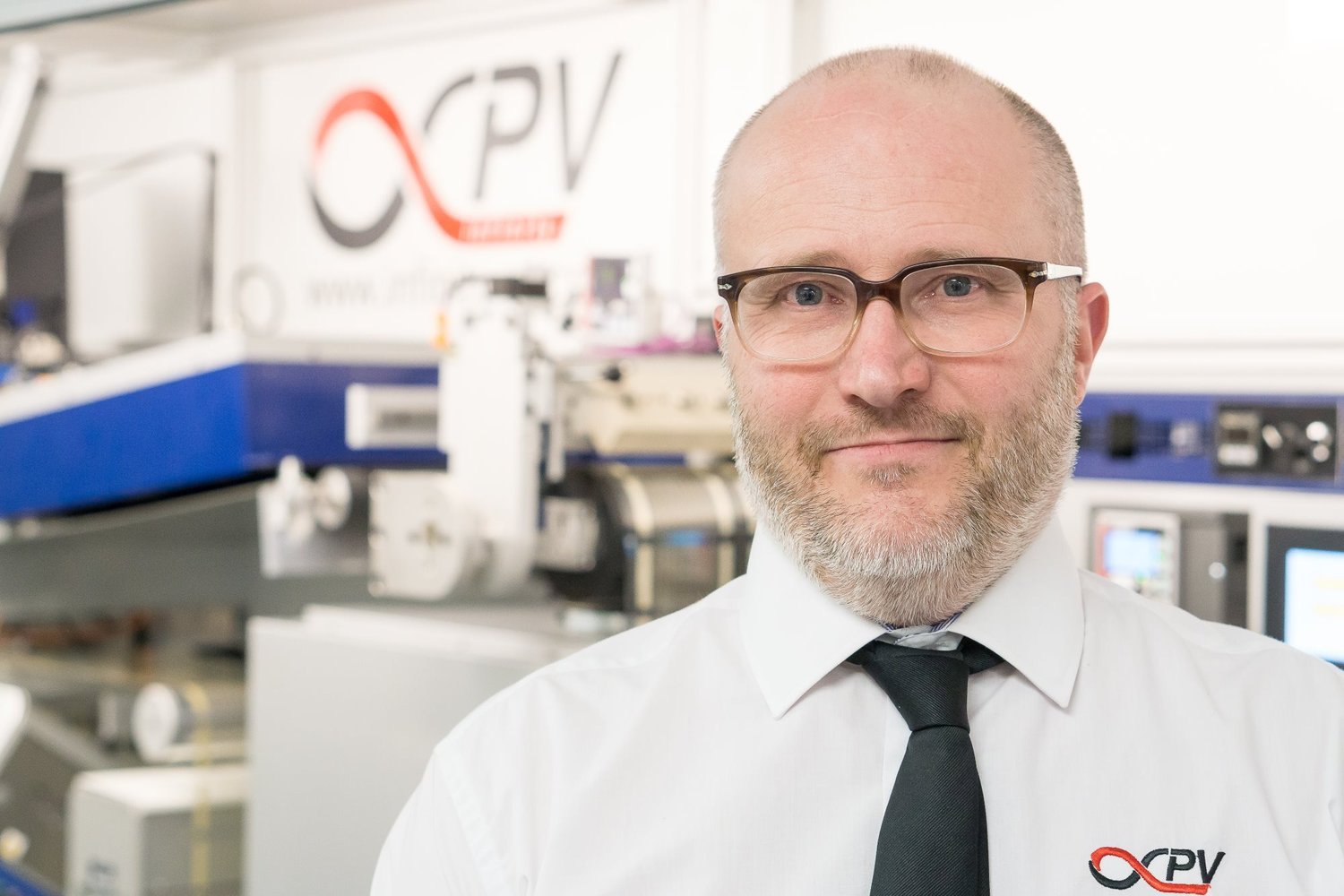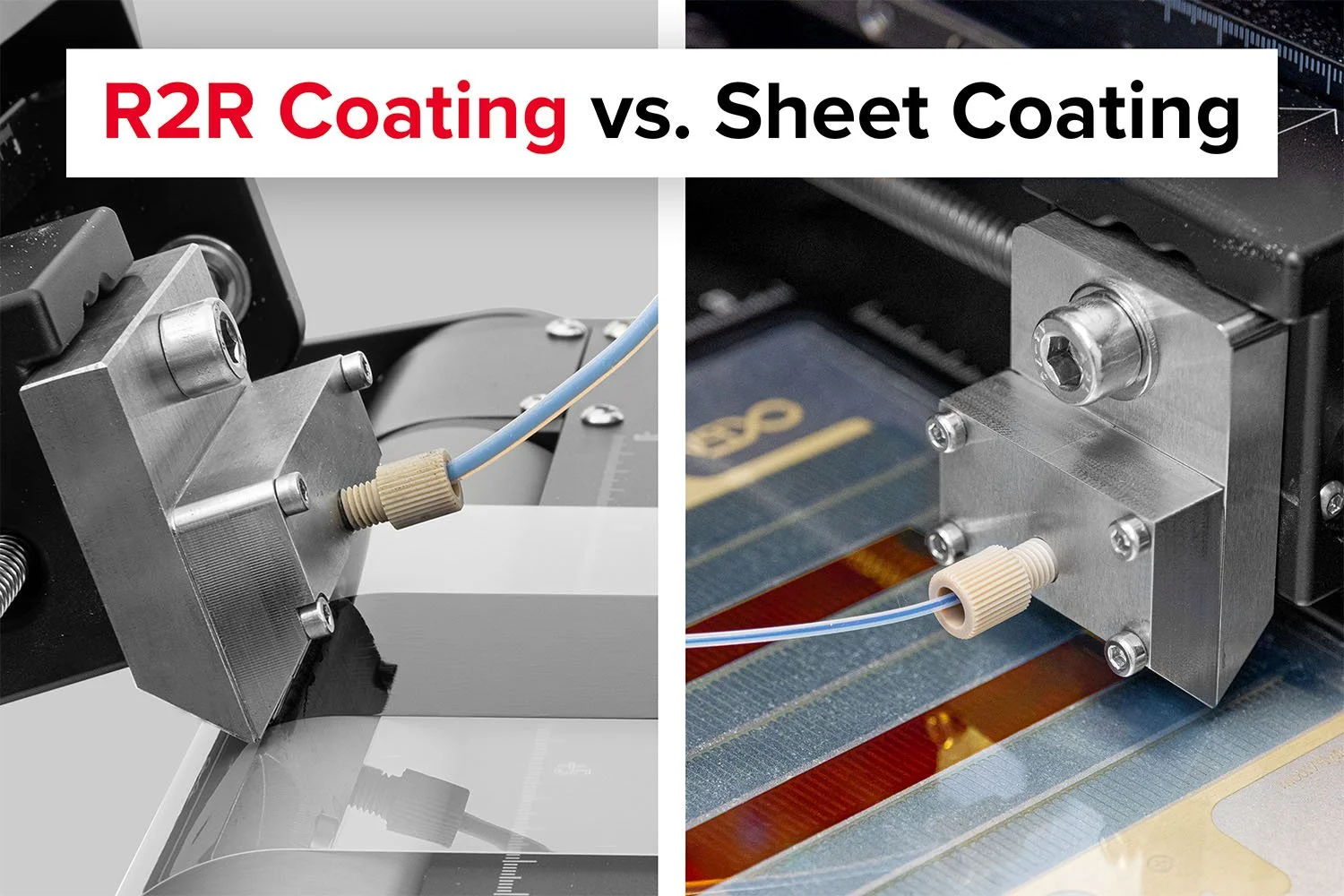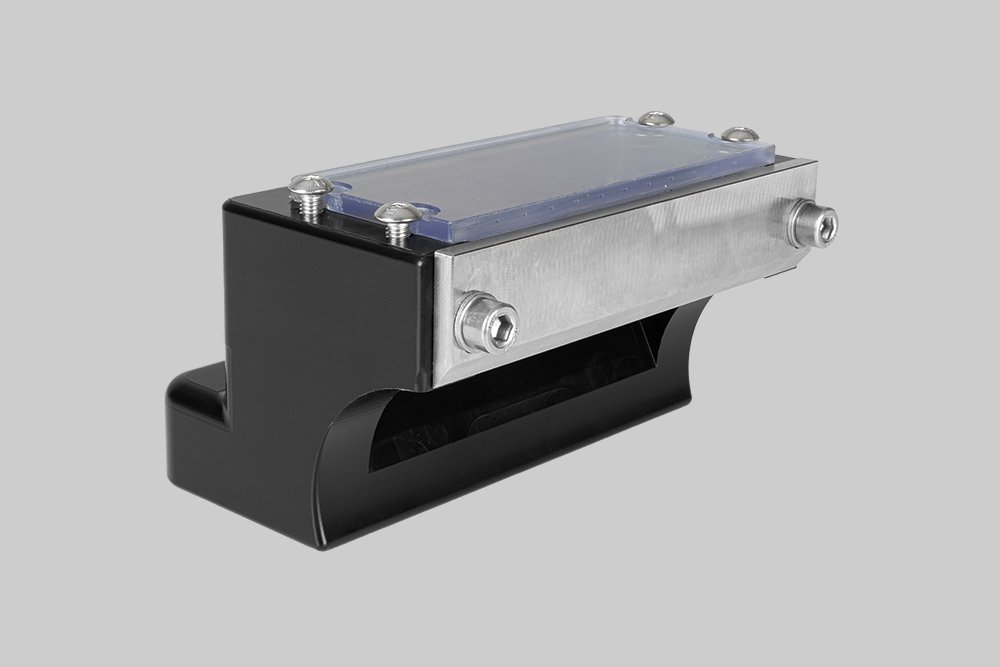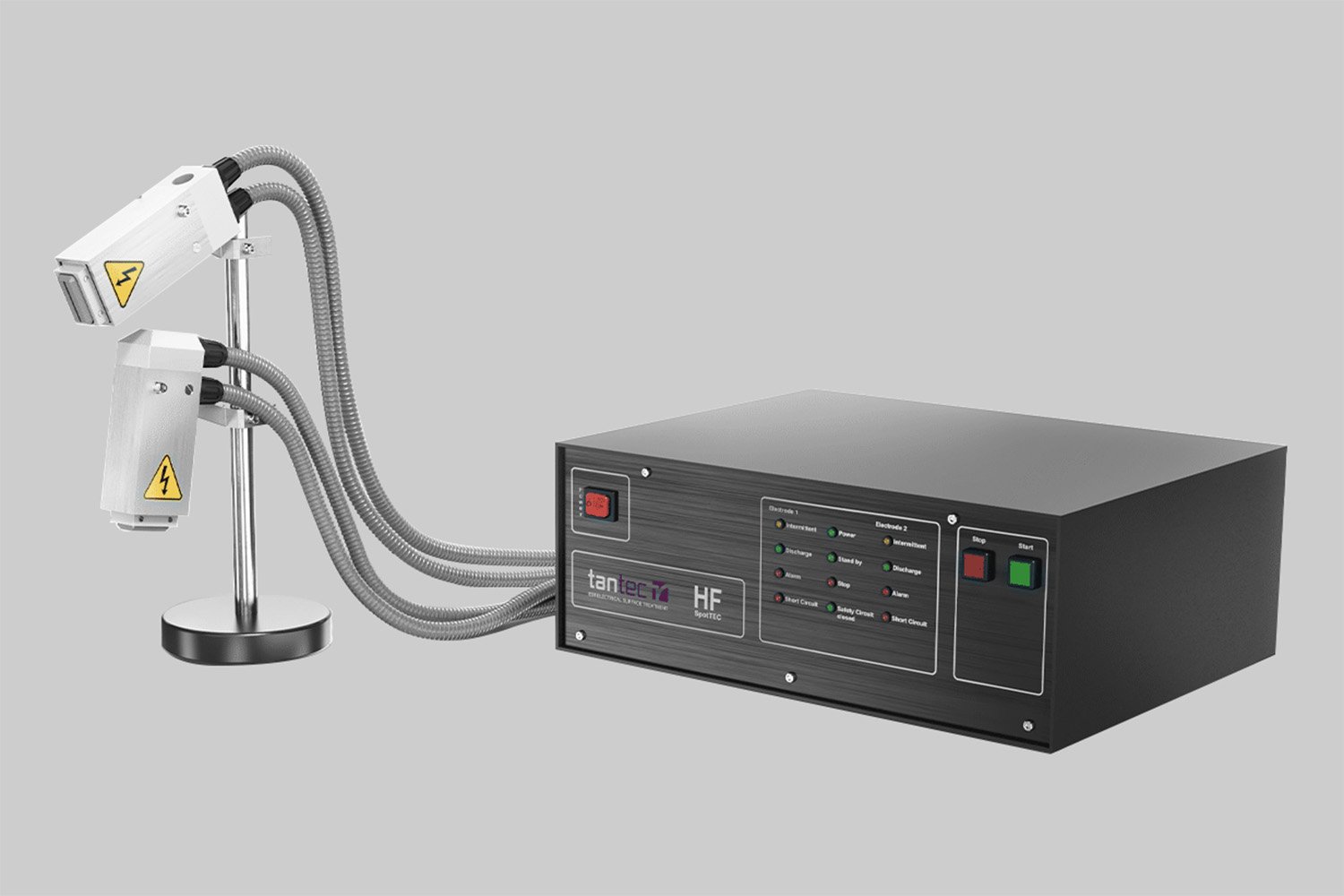
Slot-Die Coating: Precision Thin-Film Deposition Technology
Why Choose Slot-Die Coating?
Slot-die coating is a high-precision deposition technique that enables the uniform application of thin films across a variety of substrates. This technology has become a critical tool in industries such as energy storage, printed and flexible electronics, display manufacturing, and functional coatings. By offering unparalleled control over film thickness, slot-die coating ensures high-quality coatings with excellent reproducibility. Additionally, it is highly scalable, seamlessly transitioning from laboratory research and development to full-scale industrial manufacturing. One of its key advantages is material efficiency, which minimizes waste and optimizes the use of expensive functional materials such as conductive inks, bioactive compounds, and OLED materials. These benefits make slot-die coating an essential technique for both research and mass production environments.
Key Benefits of Slot-Die Coating:
High Precision & Uniformity: Produces coatings with minimal thickness variation, ensuring consistent performance.
Material Efficiency: Reduces waste by enabling controlled deposition, particularly beneficial for costly materials.
Scalability: Adaptable from small-scale R&D applications to large-scale roll-to-roll (R2R) production.
Versatility: Compatible with a broad range of materials and substrates, including polymers, glass, and metal foils.
Multi-Layer Coating Capability: Supports the deposition of multiple functional layers in a single process step, crucial for advanced electronics and energy storage applications.
Advantages of Slot-Die Coating
Precision and Uniformity: Slot-die coating ensures exceptional control over coating thickness, achieving sub-micron to micron-level accuracy. This level of precision is critical for applications requiring uniformity, such as printed electronics and energy storage devices. Unlike conventional coating methods, slot-die coating minimizes defects and inconsistencies, leading to superior product performance and reliability.
Material Efficiency: Material waste is significantly reduced due to the controlled deposition of coatings. This efficiency is particularly beneficial for high-value materials such as perovskite solar cell precursors, conductive polymers, and nanoparticle suspensions. By optimizing the coating process, manufacturers can achieve cost savings while maintaining product quality.
Scalability: Slot-die coating is designed to transition smoothly from small-scale laboratory research to industrial manufacturing. It is compatible with both sheet-based batch processing for R&D purposes and roll-to-roll (R2R) processing for high-volume production. This scalability ensures that once a formulation is optimized in the lab, it can be efficiently translated into full-scale manufacturing with minimal modifications.
Versatility: The adaptability of slot-die coating allows it to be used with a wide range of materials, including polymers, composites, and nanoparticles. It is also suitable for a variety of substrates, from rigid surfaces like glass and silicon wafers to flexible materials such as PET films and metal foils. This versatility makes it an invaluable tool across multiple industries.
Multi-Layer Coating Capabilities: For applications requiring multiple functional layers, slot-die coating offers a controlled method for depositing stacked layers with precision. This capability is essential for advanced electronics, organic photovoltaics (OPVs), sensors, and display technologies.
Slot-die Coating Equipment
Choose a slot-die coater based on your material, coating needs, and production scale. Whether for research or high-volume production, we’re here to help you find the right system for optimal efficiency and quality.
Slot-die Coater
We recommend choosing sheet-based processing, such as the Slot-die Coater, for lab-scale research, prototyping, and small-batch production. This method offers the flexibility to test formulations, adjust parameters, and produce precise coatings in limited quantities—ideal for early-stage development and specialized applications.
Laboratory Roll-to-Roll Coater
Choose Roll-to-Roll (R2R) Processing, such as the Laboratory Roll-to-Roll Coater, when you need to scale up lab-scale results for continuous, high-throughput production. While still on a laboratory scale, R2R processing ensures uniformity and consistency over long substrates, making it suitable for applications that will eventually transition to larger-scale manufacturing.
R2R Hybrid Coater
We recommend the R2R Hybrid Coater for researchers seeking maximum flexibility and performance in lab-scale thin film processing. This innovative system combines the precision of sheet-based coating with the efficiency of continuous roll-to-roll operation—making it ideal for everything from early-stage formulation to pilot-scale production
Your Trusted Coating Partner
With decades of experience in slot-die coating, our expert team is here to provide in-depth guidance on choosing the right system for your needs. Whether you're exploring advanced production methods or need help fine-tuning your setup, we offer expert advice tailored to your project.
How to Slot-die Coat on Pristine Clean Surfaces
Discover how pristine clean surface coating eliminates defects by applying functional layers onto untouched substrates. Ideal for medtech, solar cells, OLEDs, and advanced electronics.
Which Slot-die Head Do YOU Need?
Your coating process is only as good as the head that delivers it. Whether you’re developing batteries, solar cells, fuel cells, pharmaceuticals, or something else, selecting the right slot-die head is critical for quality, efficiency, and cost-effectiveness. In our guide, we break down how to evaluate your needs and help you understand which size and material slot-die head suits your application best.
Methods of Slot-Die Coating: Sheet-Based vs. Roll-to-Roll (R2R)
Slot-die coating can be performed in two primary ways: sheet-based and roll-to-roll (R2R). The choice of method depends on the scale of production and material requirements.
Sheet-based coating is ideal for small-scale research and prototyping. In this approach, individual sheets are coated one at a time, allowing for precise process control and easy adjustments. This makes it well-suited for materials testing, optimization, and small-batch production. The advantages of sheet-based coating include:
Greater flexibility in parameter adjustments.
Ability to test different formulations without large material costs.
Simplified equipment setup compared to roll-to-roll systems.
Roll-to-roll (R2R) coating, on the other hand, is a continuous process designed for large-scale manufacturing. A flexible substrate is unwound from a roll, coated, dried, and rewound, ensuring high efficiency and throughput. This method is widely used in industries such as solar energy, battery production, and flexible electronics, where consistent, high-volume coating is required. Key benefits of R2R slot-die coating include:
High-speed production with minimized downtime.
Uniform coating over large areas.
Compatibility with multiple layers and processing steps in a single pass.
Slot-die Heads
The slot-die head is a fundamental component of the slot-die coating system, responsible for ensuring consistent material flow and precise film formation. Its design directly impacts the quality of the final coating, making it a critical factor in both research and production environments. Slot-die heads are engineered to provide high precision and minimal material waste, offering a scalable solution from laboratory-scale experiments to large-scale manufacturing.
Materials and Compatibility
Slot-die heads are available in a variety of materials such as PEEK, stainless steel, and titanium, each selected for its compatibility with different coating materials. PEEK is known for its high chemical resistance, making it ideal for applications involving aggressive solvents. Stainless steel is commonly used for general-purpose coatings due to its durability and ease of cleaning, while titanium is often chosen for its superior resistance to corrosion, especially when working with aggressive or reactive chemicals.
Size and Customization
Slot-die heads come in various sizes to accommodate a wide range of substrates, from small laboratory samples to large industrial-scale films. The coating width is a key consideration when selecting a slot-die head, as it must match the size of the substrate to ensure uniform material distribution. Available widths typically range from 40 mm to 305 mm, but custom sizes can be made to fit specific needs. Additionally, interchangeable shims allow for fine-tuning of the coating width and thickness, giving users flexibility to adjust to different applications and material types. This customization is essential when working with a variety of substrates, ensuring optimal performance and minimizing waste.
Film Thickness Control
Precise control over film thickness is one of the key advantages of slot-die coating, and the slot-die head plays a crucial role in this. Adjustable shims within the head allow for fine-tuning of the gap through which the coating material is dispensed, directly influencing the final layer thickness. This level of precision is essential for applications where even small deviations in film thickness can impact product performance, such as in the production of solar cells, batteries, and flexible electronics.
Heated Slot-Die Heads
For certain applications, especially those involving high-viscosity materials or temperature-sensitive coatings, heated slot-die heads can be an essential addition. These heated heads maintain the coating material at an optimal temperature, ensuring consistent viscosity and flow during deposition. This is particularly useful for materials that need to be applied at specific temperatures for proper curing or to maintain their viscosity, such as in the production of perovskite solar cells or other advanced thin-film technologies. Heated heads also help reduce the risk of clogging or uneven material flow, ensuring more reliable and consistent results.
Maintenance and Ease of Cleaning
The ease of cleaning and maintenance of slot-die heads is another important consideration. Slot-die heads are designed for quick disassembly, which simplifies cleaning after each run and ensures that there is no cross-contamination between different coatings. Depending on the material being coated, the head can be cleaned using various methods, such as solvent flushing or ultrasonic cleaning. Regular maintenance helps extend the lifespan of the equipment and ensures the long-term reliability of the coating process.
Selecting the Right Slot-Die Head
When selecting a slot-die head, several factors must be taken into account to ensure compatibility and optimal performance:
Material compatibility – The slot-die head must be constructed from materials that can withstand the chemicals in the coating solution.
Coating width – The head must match the width of the substrate to ensure uniform coating.
Film thickness precision – Adjustable shims allow for control over the coating thickness.
Ease of cleaning and maintenance – Quick disassembly and cleaning features ensure minimal downtime and better process efficiency.
Heated heads – For temperature-sensitive applications, heated slot-die heads are crucial for maintaining the viscosity of the coating material.
In summary, the slot-die head is a versatile and essential component in the slot-die coating process. Its material, size, and features such as adjustable shims and heated capabilities can be customized to suit a wide range of applications, ensuring high-quality coatings with minimal waste.
Slot-Die Coating Components
Achieving precise, uniform coatings in slot-die coating requires a carefully integrated system of components that support, optimize, and enhance the overall process. These components play distinct roles in ensuring high-quality deposition, minimal material waste, and efficient production across different scales, from laboratory research to full-scale manufacturing
Drying and curing systems are critical for solvent evaporation and material stabilization. These systems include hot air, inert gas, infrared (IR), UV, and UV-LED options, allowing for flexibility in processing different materials. Air knives can further optimize drying by removing excess solvent or liquid before curing, helping to achieve uniform film thickness.
In addition to drying and curing, a laminator is often integrated into the slot-die coating process to ensure that multiple layers of coating materials are applied evenly. Laminators are used to bond coatings to substrates, creating a smooth, consistent layer. This process is crucial when working with flexible substrates, such as in the production of flexible electronics, solar panels, and other applications that require high precision and uniformity. The laminator ensures that multiple layers of material adhere properly without defects, offering an additional layer of quality control.
Pumps play a vital role in controlling fluid delivery. Syringe pumps, such as the Jumbo and Mammut models, are ideal for low-flow, precise liquid deposition, while gear pumps are better suited for continuous high-volume coating in roll-to-roll systems. Choosing the right pump depends on the viscosity, flow rate, and stability of the coating material.
An air knife is a key component used in drying applications to optimize the coating process. Air knives efficiently remove excess solvent or liquid from the coated surface before the curing step. By precisely directing a high-speed airflow, air knives promote uniform drying, prevent material pooling, and help achieve consistent film thickness. This is particularly valuable in high-throughput roll-to-roll applications, where fast and even drying is critical to maintaining process efficiency and coating quality.
Corona and plasma surface treatment systems enhance adhesion by modifying the surface energy of substrates. This is particularly useful for non-porous materials like PET, PEN, and glass. Surface treatment ensures better wetting and uniform deposition of coating solutions.
infinityPV’s Slot-Die Coating Solutions
At infinityPV, we specialize in modular, high-precision slot-die coating systems designed for laboratory, pilot, and industrial-scale production. Our product offerings include precision-engineered slot-die heads available in various materials and customizable widths. We also provide flexible pumping systems, including syringe and gear pumps, tailored to different coating applications. For more information on how our solutions can meet your needs, visit our slot-die coating product page or contact us directly.














